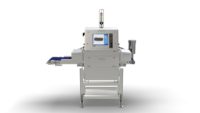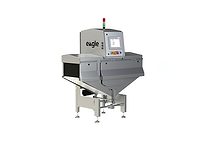How to Achieve Optimal X-ray Inspection Machine Performance in Three Steps

To help X-ray inspection machine owners get the most out of their investment, Eagle Product Inspection offers suggestions for optimizing peak performance during the lifecycle of the equipment.
According to Travis Ratcliff, service manager, North America, operators can take some simple but crucial steps to ensure that their X-ray machines are operating at the best and most consistent level. “There’s a lot on the line when it comes to safety and quality, so inspection equipment has to run as optimally as possible. In addition to choosing a well-constructed, rugged machine that is built to last, maintenance and planning go a long way in achieving that optimal operation,” he says.
Ratcliff suggests three areas of action for maximizing X-ray system efficiency and simultaneously lowering the total cost of ownership of the equipment:
- Take stock of the operating environment: “The setting on the line or plant floor should be conducive for the effectiveness of the machine,” says Ratcliff. For example, because fluctuations in power and/or electricity can impact imaging and analysis performed by an X-ray machine, clean, stable power is pivotal. Eagle’s experts recommend a maximum fluctuation range of +10 to -5 percent and, depending on the facility, may suggest the installation of an independent power unit. In addition, because X-ray depends on stability, a machine should be securely bolted to the floor to prevent any vibration that may interfere with the beam. Product that arrives from a transfer point to the X-ray machine should be consistently presented and tightly controlled.
- Train for success: Proper set-up of the machine and correct teardown and cleaning procedures depend on the machine operator, underscoring the importance of thorough user training. “Operators need to understand what the machine is telling them through the controls or software so they can make needed adjustments quickly and prevent unnecessary downtime,” says Ratcliff. In addition, users should recognize the layers of technologies the system offers and realize that there are limitations even with the most advanced equipment and software.
- Be proactive. Preventive maintenance programs are essential, given the fact that these are machines that, although built to last, do experience wear after a certain number of years and uses. “Talk to your equipment provider and ask about maintenance plans that can ensure uptime,” says Ratcliff. Having preventive maintenance kits and extra parts on site is also a way to optimize performance and extend the longevity of X-ray machines by limiting downtime.
Ratcliff emphasizes the importance of planning for the unplanned by having a network support plan in place, including remote support, for faster response time in the event of any problem or issue with the machinery. “As with anything—another piece of processing equipment, a vehicle or an appliance—X-ray machines wear over time. But these are ways that manufacturers can get the best and longest performance out of their systems and their investment,” he says.
Eagle Product Inspection | 877-379-1670
Looking for a reprint of this article?
From high-res PDFs to custom plaques, order your copy today!





